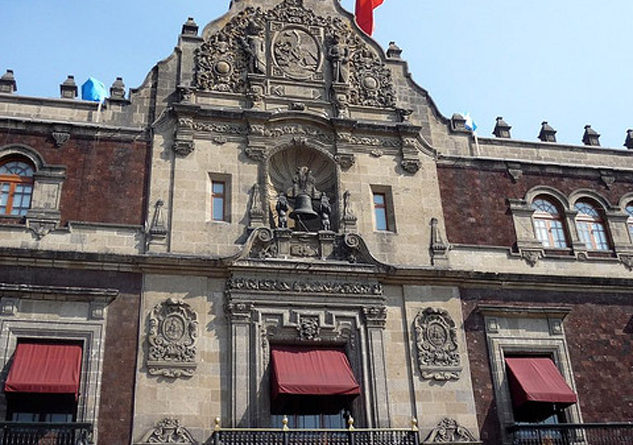Raoul Lowery Contreras
Special to El Observador
On a sunny February day in 2007 in Tijuana, Mexico, I was standing on world-famous Revolution Avenue among countless stores and stands selling tourist merchandise the street had sold to millions of Americans over the years, smoking a Cuban cigar that was illegal two miles north in the U.S.A. Suddenly, a mass police presence descended on the avenue blocking off crossing streets with squad cars and motorcycles.
Rumbling from east of downtown Tijuana came a Mexican Army convoy led by U.S. made Humvees followed by two-and-a-half-ton Army trucks carrying a regiment of Mexican soldiers in their desert camouflage uniforms carrying American-made M-16 assault rifles.
They had been ordered into Tijuana by newly-elected President Felipe Calderon to disarm and replace the notoriously corrupt Tijuana police force that had engaged in a noontime gun fight on the main street with state judicial police protecting a rival drug cartel. It was brazenly attempting to poach Tijuana from the then infamous Felix Arrellano drug cartel that supplied illegal narcotics to California, Las Vegas and the West Coast.
Since that day in 2007, 80,000 people have died in the Mexican war on drugs that started that day I smoked a Cuban cigar on Revolution Avenue. That is more than all the Americans killed in a similar 12 years in Southeast Asia, in Vietnam. Like the ineffective U.S. war in Vietnam, the Mexican government has little to show for its campaign against the drug cartels. It has been unable to end the massive corruption fueled by drug cartels. Why? Because they have voluminous cash resources derived from the $20 to $30 billion Americans spend on cartel produced and distributed narcotics.
The massive body count has deeply affected Mexican politics and is part of the coming Mexican political campaign that will elect a new president and congress (500 deputies, 128 senators) and over 2,800 local and state officials on July 1. National crime and corruption join petroleum, the economy and poverty as issues. Added in: young Mexicans are concerned with “impunity” of criminal office-holders.
As usual, the main Mexican presidential candidates do not look like the 90 percent of Mexicans who are either full-blooded Indian (30%) or the mixed Mestizo (60%); they look like the Spaniards that arrived in Mexico 499 years ago.
Andres Manuel Lopez Obrador (AMLO) – leftist former mayor of Mexico City is the candidate of the MORENA party he founded so he could run for President again, he leans to authoritarianism, offers the possibility of full amnesty for drug cartel members and formation of national armed force “creating a federal public security department and a national guard incorporating both police and military forces…(but)There will be no torture in our country…Lopez Obrador also criticized Trump administration plans for what he called an ‘unnecessary’ wall along the U.S.-Mexico border.”
Ricardo Anaya is the candidate of the Center Right P.A.N
(National Action Party) party that broke the 70 year-long one-party dictatorship of ruling PRI party in 2000 when Vicente Fox won the Presidency which Felipe Calderon repeated in 2006. Actually Anaya is a coalition candidate of the PAN and the leftist PRD (Democratic Revolutionary Party) party that twice nominated AMLO for president in 2006 and 2012.
Anaya is a free enterpriser campaigning on economics and economic growth that is projected to make Mexico the 5th largest economy in the world in 2050.
“To combat poverty, (Anaya proposes) to grow the economy by boosting competition and investment, and progressively increasing the minimum wage…The best social policy is economic policy, and well-paid jobs…At the right time I will say personally to the president of the United States, and I will say it in his language so there will be absolutely no confusion … Mexico will not pay a single cent for that wall…”
Interesting to Mexophiles is the fact that “Jose Antonio Meade officially became the first non-member presidential candidate for the governing Institutional Revolutionary Party, or PRI, in its nearly 90-year history.”
Meade: “Needs are always personal. Government support will be as well…. There is no effort that can be spared, nor time to lose…” On violence and graft “I have been with those who face the challenge of security every day…They ask us to take away the weapons, the money and the assets from the criminals and the corrupt, and that is exactly what we will do.”
Looking ahead and recalling that Obrador lost the presidency in 2006 by four-tenths of a percent to Calderon, another interesting facet is that over 500,000 properly-credentialed Mexican nationals living in the U.S. are eligible to vote by absentee ballot this year.
In 2012 and 2006 Mexicans in the U.S. had to return physically to Mexico to vote at border voting stations. This time they can do it by mail.
Los Angeles, of course, has the largest number of eligible Mexican absentee voters, Dallas is second followed by Houston, Chicago and New York City.
So much has changed in Mexico since General Manuel Avila Camacho “received” 93.9 percent of the 1940 Mexican vote for President and his opponent, General Juan Andreu Almazan (who probably received close to 50% of the vote) officially received 5.7%.
Caramba! Absentee votes from Mexicans living in the U.S. can decide the Mexican Presidency. And, some of these voters can be American citizens.
Raoul Lowery Contreras is the author of “The Armenian Lobby & U.S. Foreign Policy” (Berkeley Press 2017) and “The Mexican Border: Immigration, War and a Trillion Dollars in Trade” (Floricanto Press 2016); he formerly wrote for the New American News Service of the New York Times syndicate.






